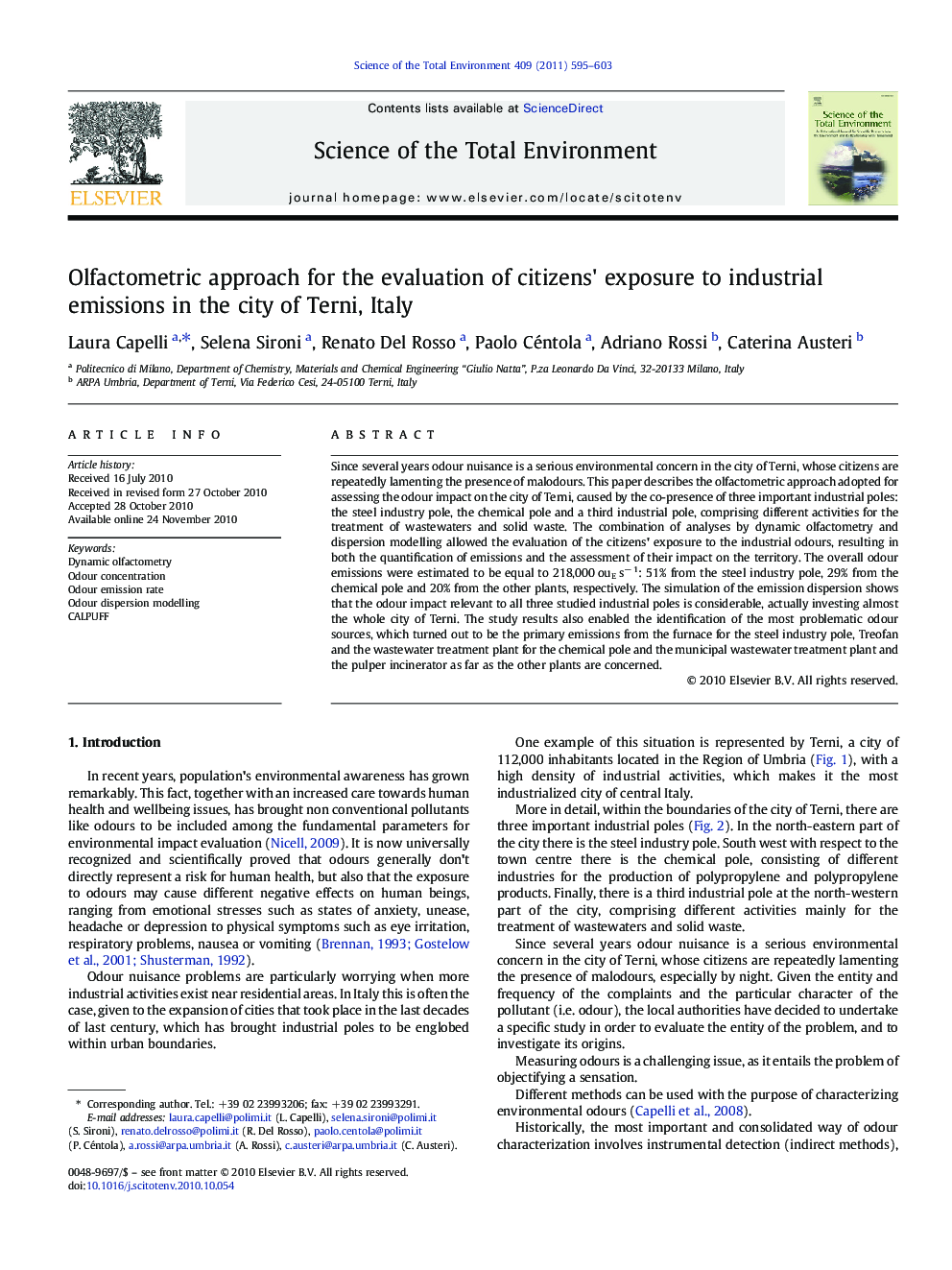| Article ID | Journal | Published Year | Pages | File Type |
|---|---|---|---|---|
| 4430094 | Science of The Total Environment | 2011 | 9 Pages |
Since several years odour nuisance is a serious environmental concern in the city of Terni, whose citizens are repeatedly lamenting the presence of malodours. This paper describes the olfactometric approach adopted for assessing the odour impact on the city of Terni, caused by the co-presence of three important industrial poles: the steel industry pole, the chemical pole and a third industrial pole, comprising different activities for the treatment of wastewaters and solid waste. The combination of analyses by dynamic olfactometry and dispersion modelling allowed the evaluation of the citizens' exposure to the industrial odours, resulting in both the quantification of emissions and the assessment of their impact on the territory. The overall odour emissions were estimated to be equal to 218,000 ouE s− 1: 51% from the steel industry pole, 29% from the chemical pole and 20% from the other plants, respectively. The simulation of the emission dispersion shows that the odour impact relevant to all three studied industrial poles is considerable, actually investing almost the whole city of Terni. The study results also enabled the identification of the most problematic odour sources, which turned out to be the primary emissions from the furnace for the steel industry pole, Treofan and the wastewater treatment plant for the chemical pole and the municipal wastewater treatment plant and the pulper incinerator as far as the other plants are concerned.
Research Highlights►Olfactometric approach adopted for odour impact assessment in urban area. ►Application of dynamic olfactometry and dispersion modelling to a complex case. ►Quantification of emissions in terms of odour concentration and odour emission rate. ►Identification of most problematic odour sources.
